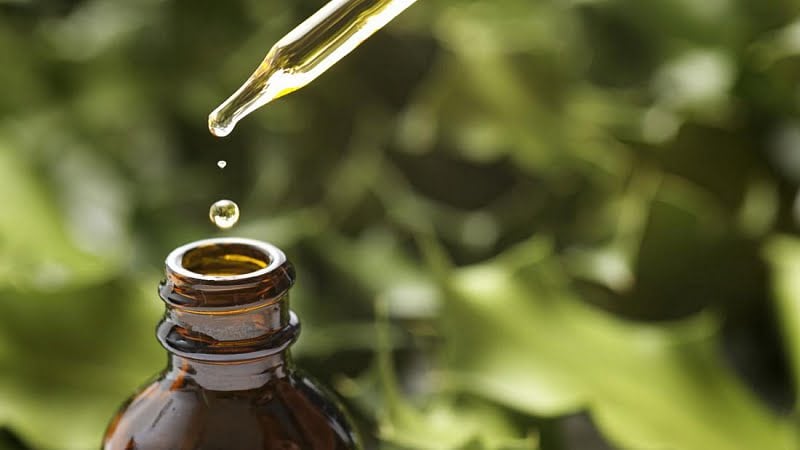How to Dilute Terpenes Safely?

Terpenes offer us a world of benefits — from adding flavor and aroma to boosting a product’s health benefits.
You can even mix and match several terpene extracts to create your own custom flavors or recombine them to match the aromas of your favorite strain of cannabis. Terpenes, in their pure form, are extremely potent. You can’t use them directly, or you risk side effects. To use pure terpenes safely, you have to dilute them first.
This guide teaches you how much you need to dilute terpenes, what materials you’ll need, and how to do it yourself.
Key Points: How to Dilute Terpenes
- Aim to dilute terpenes to a concentration of 5% or less of the volume of the final product
- Terpenes will dissolve well in oils, alcohols, and vegetable glycerin — but poorly in water
- Concentrated terpenes can cause damage and irritation to the skin and lungs
- Avoid getting terpenes in your eyes, mouth, or nose — wear gloves and goggles
What are Terpenes?
Most plants produce terpenes. They’re a group of related phytochemicals that give plants their unique aroma and color in some cases.
Terpenes protect the plants against natural predators and harmful sun UV rays and attract pollinators that help in propagation.
These useful chemicals also play a role in cloud seeding. They form a part of the volatile organic compounds or VOCs that clump together in the upper atmosphere. These clumps become water and ice droplets that can induce condensation and lead to rain.
Why Dilute Terpenes?
Terpene oils contain pure, concentrated terpenes; using terpene oils in this form can cause several health issues.
Terpene oils aren’t actually made of oil — they’re made of alcohols, ketones, monoterpenes, triterpenes, and more. Their chemical characteristics have solvent-like activity — which can irritate the skin and mucous membranes, or worse.
Potential Health Issues Caused by Undiluted Terpenes
- Skin allergies
- Skin irritation
- Irritation of the mucous membranes
- Headaches
- Dizziness
- Shortness of breath
- Heart palpitations
- Seizures
This is why you should never apply, ingest, smoke, or vape terpene oil in its pure and concentrated form.
How to Dilute Terpenes
Diluting terpenes is simple — the whole point of the process is to mix your terpenes with another compound — such as oil, vegetable glycerine, or vape oil until the total concentration of terpenes is at or below 5%. Below is the step-by-step process of diluting terpenes — from choosing the terpene and carrier oils to storing the final product.
1. Choose Your Terpene Oil
Terpene oils range in size and come in bottles ranging from 5 mL to 500 mL. You can find virtually any terpene you want online — so the main selection criteria involve choosing strain-specific terpenes with the aromatic profile you’re looking for or the effect profile you’re looking for. Only buy from companies with a good reputation, high product reviews, and most importantly, lab-tested products.
For example, if you’re after terpenes that relax, then choose myrcene or caryophyllene. If you want terpenes that boost mood and energy, select limonene or linalool instead.
Some terpenes — such as caryophyllene, pinene, linalool, bisabolol, and eucalyptol — work great to reduce discomfort and ease tired joints and muscles.You can also mix and match different terpenes to create new aromas or effect profiles. If you want your cannabis flower to smell fruity and floral, boost it with linalool, limonene, bisabolol, or terpinolene. Spice it up with a mix of caryophyllene, myrcene, humulene, and camphene if you prefer an earthy, musky, spicy, and woody aroma.
2. Choose Your Carrier Oil
Terpenes have an oily, sticky consistency, so you need a carrier oil that easily dissolves them. The top carrier oils include:
- MCT oil
- Coconut oil
- Olive oil
- Jojoba oil
- Hemp oil
These carrier oils not only dissolve and distribute the terpenes evenly within the solution, but they also help our cells absorb these terpenes more efficiently.You can also use vape oils or add terpenes to cannabis concentrated directly. Just remember to consider the terpene profile that may already be present in the extract before you go about adding any more.
3. Wear Protective Equipment
All terpenes can be harmful in concentrated form, but some are definitely more dangerous than others — handle these compounds with care and attention. Wear gloves, and avoid touching your face if you’ve managed to spill some of it on your skin.
It’s also a good idea to work in a space with plenty of ventilation if you’re going to be mixing large quantities. The very nature of terpenes is to evaporate into the air, where they’re then inhaled via the lungs. Small amounts are perfectly safe, but if you’re in a confined space, it could irritate the lungs and airway.
4. Calculate the Dilution Rate
The best dilution ratio is to add about 1% to 5% terpenes by the total volume of the carrier oil. Some terpenes allow for higher concentrations, but in general, you’ll want to stick to 5% or below to be completely safe. The calculation for determining terpene dilution is as follows:
[TOTAL VOLUME] x [DESIRED DILUTION/100] = TOTAL AMOUNT OF TERPENES TO ADD
For example, let’s say you have a 30 mL bottle and make the terpene concentration 5%. The calculation would look like this: [30 mL] x [0.05] = 1.5 mL
Using this calculation, you would want to add about 1.5 mL of terpenes to your bottle to reach the desired 5% dilution.
5. Prepare the Equipment
Now that you have a good idea of the terpene and carrier oils you need, the next step is preparing the materials and equipment. Make sure everything is sterile before use.
You’ll need the following:
- Protective gloves and eyeglasses
- Terpene oils of choice
- Carrier oil of choice
- Glass containers for mixing and storage
- Glass or stainless mixing tool
- Pipette to measure the terpene and carrier oils
6. Dilute the Terpene Oil
Below is the step-by-step process of diluting terpene oils.
- Put on your protective gloves and glasses before mixing the oils, and make sure you’re in a well-ventilated room. Terpene oils are potent and can irritate the skin and eyes.
- Measure out the oils using the pipette. The best ratio is 1% to 5% terpene to the total volume of the final product.
- Prepare a container with the starting amount of carrier oils and then add the terpenes.
- Mix thoroughly using a glass or stainless steering rod.
- You may also use a homogenizer to ensure an even distribution of the terpenes.
- Store in an airtight, glass container.
NOTE: A homogenizer is a fancy immersion blender that evenly mixes the terpene oil and carrier oil. You insert the mixer into the mixture and switch on the device. It then agitates the mixture, further reducing the sizes of the compounds. The vibration also forces the particles together until they’re evenly and thoroughly mixed.
This machine is entirely optional but will help immensely when preparing large batches of dilution.
How to Store Your Terpene Oil
Store your terpene oil like you would your essential oils and cannabis oils.Terpenes quickly degrade when exposed to prolonged air, heat, and light. These elements speed up the degradation process of terpenes, affecting their aroma and flavor and their effects.
When storing terpene oils, make sure to keep the container tightly closed. You don’t want excess air getting into the container and affecting the quality.It’s also essential to keep the container in a dark, cool place.
This way, they won’t be unnecessarily exposed to light and heat. You can also keep it inside your refrigerator. Just wrap the container up in dark paper to prevent the refrigerator light from affecting it. For terpene-infused cannabis products, be sure to keep them out of reach from children and pets.
How To Use Diluted Terpenes
 Terpenes can be diluted into a wide range of different product types. The sky is really the limit here. Here are some of the most popular uses for terpenes in diluted form.
Terpenes can be diluted into a wide range of different product types. The sky is really the limit here. Here are some of the most popular uses for terpenes in diluted form.
1. Terpenes in Aromatherapy
Aromatherapy is a form of alternative medicine that centers around the belief that aromatic plant extracts and oils can be inhaled, used topically, or taken orally for therapeutic benefits — either psychological, spiritual, or physical. There are a few theories on aromatherapy: it’s thought to stimulate the olfactory bulbs, sending messages through the nervous system to the limbic system, or decrease sympathetic nervous activity.
2. Terpenes for Topical Use
Many people rub a small amount of diluted terpene oil directly onto their skin. Depending on the terpene, there can be many benefits of doing this; they can boost your mood, offer some relief to aches and pains, soothe irritation, and support your skincare routine.
Allergic reactions are common, so be sure to test a small area first to ensure your skin doesn’t become irritated.
3. Cooking With Terpenes
Terpenes are a great way to boost flavor when cooking or baking; keep the temperature low after adding them. The boiling point for each terpene varies, so make sure you know how much heat they can take before adding them. Even diluted, terpenes are still potent, so start with a small amount — you can always add more. While you can be creative and add almost any of them, here are a few popular terpenes that often find their way into dishes:
- Caryophyllene — Add caryophyllene to any dish that has pepper in it. Its spicy, peppery notes go well with savory dishes.
- Limonene — Any citrusy dessert or dish benefits from limonene. It adds zest and boosts the flavor in things like lemon bars or orange chicken.
- Terpinolene — Terpinolene has a complex aroma, somewhat piney and flowery, but also citrusy. While you can add it to various foods, it might be best to experiment carefully with it. It’s found in nutmeg, cumin, apples, and lilacs, so its possibilities are endless.
- Pinene — Pinene has a pine scent and pairs well with sage, rosemary, and basil. Add this to any savory dish, but it won’t need more than a drop or two.
4. Vaping With Terpenes
People commonly add terpenes to an e-liquid base to make their vape juice taste better or for the effects. You must do this carefully; inhaling improperly diluted terpenes can be dangerous. The ideal dilution for vaped products is 3% or below to leave some margin for error in case you miscalculate and add too much.
Other Ways to Use Terpenes
You can also add terpene oils into other products, not just carrier oils. Here are a few ways you can incorporate terpene oils into your life.
- Infuse them in topical and cosmetic products
- Add a drop or two to cannabis concentrates, extracts, wax, shatter, etc.
- Boost the flavor of your oils, tinctures, and isolates
- Infuse it into cannabis flower
- Add them to drinks, smoothies, water, etc.
Note that one full dropper has about 20 drops, and one drop is equivalent to 0.05 mL.
These are just a few suggestions on how to use terpene oils. You can always start with a lower number of drops, of course, and adjust accordingly. Don’t use more than 5% concentration of terpenes.
Terpene Oils vs. Essential Oils: What’s The Difference?
Terpene oils are sometimes confused with essential oils, but they’re not the same.
Terpenes are individual compounds, and the plant kingdom produces over 30,000 different types. These include linalool, limonene, caryophyllene, humulene, myrcene, pinene, eucalyptol, bisabolol, and many more. Each has a unique scent, aroma, and effects.
Essential oils, on the other hand, are the concentrated extracts or “pure essence” of certain plants. You have lavender, lemongrass, chamomile, peppermint, jasmine, tea tree, cinnamon, and rosemary oils, among others. These oils contain different phytochemicals, the majority of which are terpenes, but there are other compounds in there as well.
How are Terpenes Extracted?
There are several methods that can be used to extract and concentrate terpenes from plants. Each process not only safely separates terpenes from other phytochemicals but also refines the oil and removes impurities.
1. Solventless Terpene Extraction
Solventless terpene extraction includes steam distillation or hydrodistillation.
In steam distillation, the plant materials are suspended above boiling water. The steam created by the boiling water then envelopes the plant material. As it evaporates, it carries with it the lighter oils.
The steam liquefies when it meets the cooled condenser, with the oil floating on top of the water. Hydrodistillation uses the same principle, but the plant material is completely submerged in the boiling water.
2. Solvent-Based Terpene Extraction
This uses solvents such as carbon dioxide (CO2), ethanol, or butane. The solvent washes through the plant material, extracting the terpenes, isolated and refined in a vacuum oven. Of these methods, CO2 produces the cleanest, purest, and safest end product. It doesn’t leave behind any toxic residues since CO2 evaporates, leaving behind pure terpene oil.
Final Thoughts: The Endless Uses of Diluted Terpenes
Terpenes can be extracted from plants using solventless methods like steam distillation and solvent-based methods like supercritical CO2 extraction. However, terpenes in their concentrated form are very potent. It would be best if you diluted them first before you can use them safely.
You can dilute terpenes in carrier oils or add them to products like lotions, cannabis flowers, and even beverages. Just make sure you only use 1% to no more than 10% terpene concentration by total volume.
You can use terpenes in many ways, from enhancing your CBD oil’s health effects, aroma, and flavor to adding zest to foods and drinks. You can even infuse your cannabis flowers with terpenes. The possibilities are endless.


